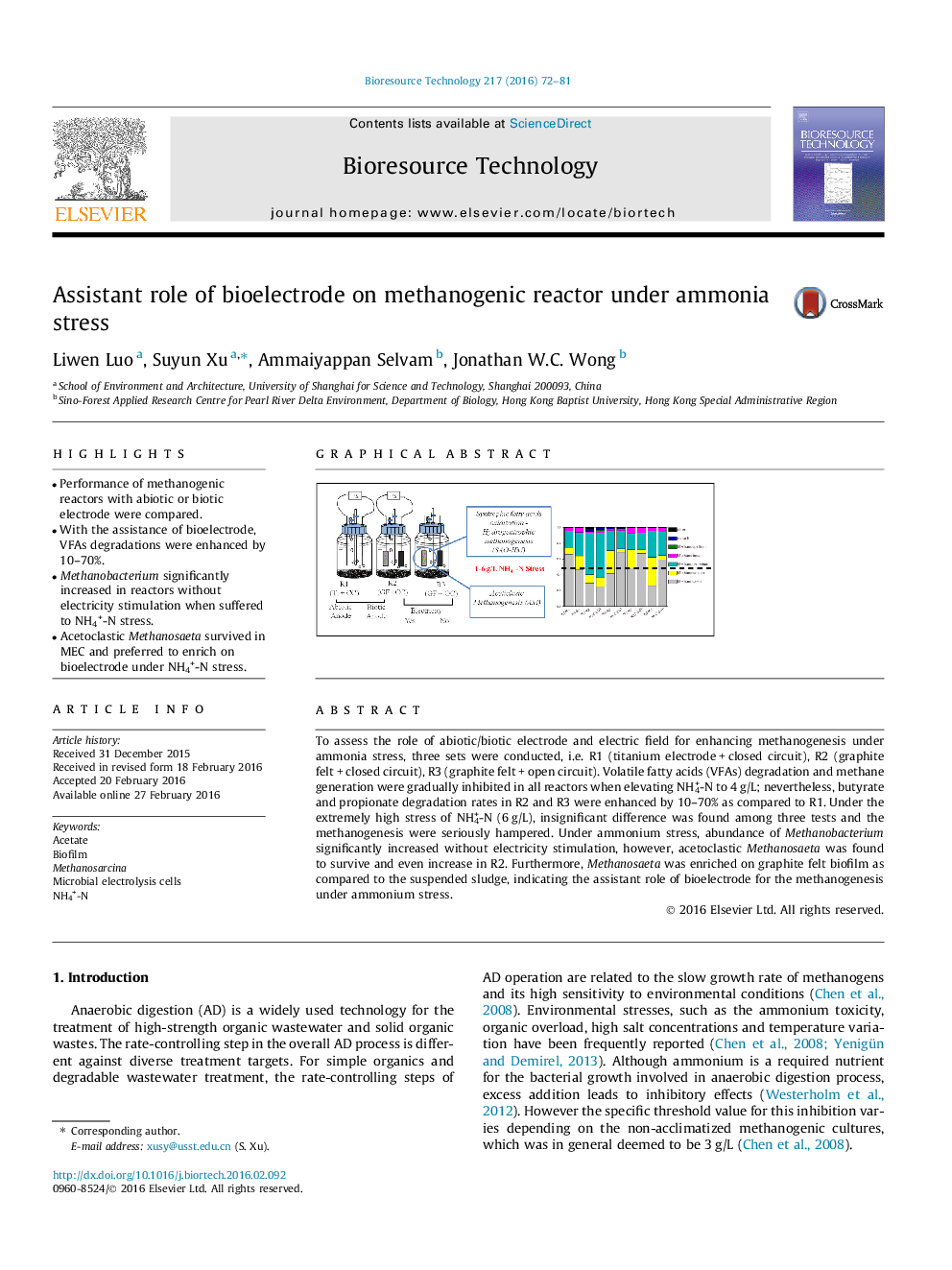| Article ID | Journal | Published Year | Pages | File Type |
|---|---|---|---|---|
| 679141 | Bioresource Technology | 2016 | 10 Pages |
•Performance of methanogenic reactors with abiotic or biotic electrode were compared.•With the assistance of bioelectrode, VFAs degradations were enhanced by 10–70%.•Methanobacterium significantly increased in reactors without electricity stimulation when suffered to NH4+-N stress.•Acetoclastic Methanosaeta survived in MEC and preferred to enrich on bioelectrode under NH4+-N stress.
To assess the role of abiotic/biotic electrode and electric field for enhancing methanogenesis under ammonia stress, three sets were conducted, i.e. R1 (titanium electrode + closed circuit), R2 (graphite felt + closed circuit), R3 (graphite felt + open circuit). Volatile fatty acids (VFAs) degradation and methane generation were gradually inhibited in all reactors when elevating NH4+-N to 4 g/L; nevertheless, butyrate and propionate degradation rates in R2 and R3 were enhanced by 10–70% as compared to R1. Under the extremely high stress of NH4+-N (6 g/L), insignificant difference was found among three tests and the methanogenesis were seriously hampered. Under ammonium stress, abundance of Methanobacterium significantly increased without electricity stimulation, however, acetoclastic Methanosaeta was found to survive and even increase in R2. Furthermore, Methanosaeta was enriched on graphite felt biofilm as compared to the suspended sludge, indicating the assistant role of bioelectrode for the methanogenesis under ammonium stress.
Graphical abstractFigure optionsDownload full-size imageDownload as PowerPoint slide
